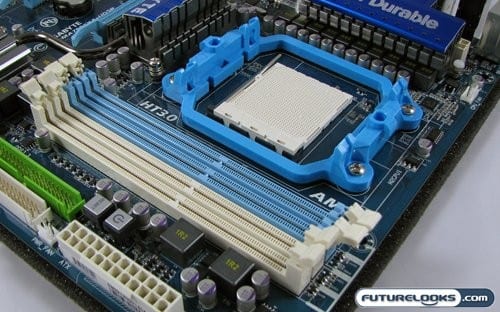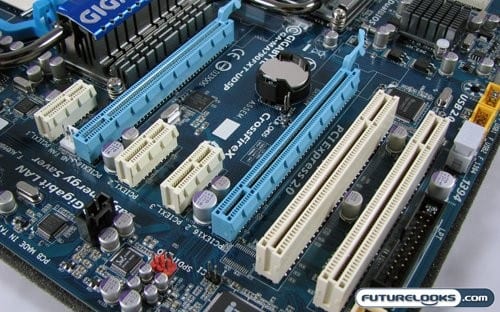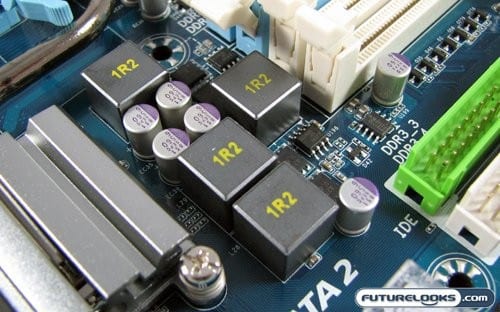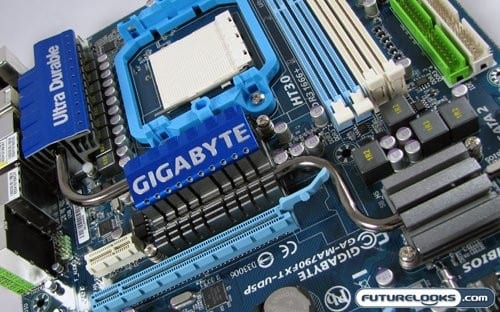Where The Important Components Sit

The one thing I want to clear up right off the bat is that when it comes to the new AM3 CPU socket is that, unlike other socket changes, you don’t need to purchase a new cooler to work with this new socket. All AM2, AM2+, and AM3 cooler retention brackets are all essentially the same. They will all work with AM2 compatible CPU coolers. Beyond that one concern, the position CPU socket on the MA790FXT-UD5P is fairly convenient, with GIGABYTE cutting down the size of the Northbridge cooler to accommodate large heatsinks.
Actually there’s one other clearance issue that comes up on many AMD motherboards, and that’s the position of the memory slots. They are remarkably close to the CPU socket, and may interfere with either cooler or RAM installation. This may cause compatibility problems between certain types of RAM and certain CPU coolers. Just be aware of what components you want to install, and if they’ll fit.

When it came to deciding how to implement CrossFireX on the MA790FXT-UD5P, it would seem to me that GIGABYTE went with a solution that would save both money and space on the board. Implementing only two PCIe x16 ports limits you to only using two video cards, but you can still straight for two Radeon HD 4870 X2 cards should you want the power of four graphics cores. This choice frees up more space for add-on cards. GIGABYTE has even gone so far as to cut a little more out of the Northbridge heatsink to accommodate a full length PCIe x1 card.
Powering Up and Cooling Down

As with every motherboard that has GIGABYTE’s Ultra Durable 3 technology, the MA790FXT-UD5P uses Japanese solid state capacitors that GIGABYTE claims will last up to 50,000 hours. These capacitors don’t wear out in the same fashion of electrolyte based capacitors, and provide stable and more consistent power to the components hooked to the motherboard.

To keep components cool that aren’t the CPU, GIGABYTE has installed a rather large cooling system. This solution places heatsinks on the Northbridge, Southbridge, and MOSFETs, and connects all those coolers with one contiguous heat pipe. This ensures that even during the most punishing of tasks, your system is running with all the power it needs.
